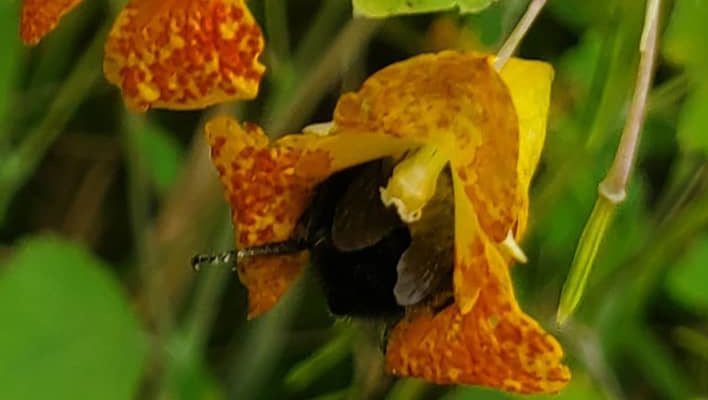I have a special place in my heart for the bumblebee. I love those fat little furry friends and their drunken stumbling through the garden. That drunken stumbling has a very important function. You see their wings beat around 130 times every second and that, combined with their large bodies, vibrates flowers and releases pollen. This is called buzz pollination and it helps your plants produce more fruit.
The 255 species of bumblebees should not be able to fly. Given the size of their wings in relation to their bodies, the fact that they get airborne has stumped scientists for years. A National Academy of Sciences Study in 2005 discovered that the reason bumblebees are able to fly is because they flap their wings back and forth rather than up and down. The sweeping wings follow a partial spin pattern-that that of a “somewhat crappy” helicopter propeller, says researcher Michael Dickinson.
Bumblebees live in colonies that range from 50 to 500 individuals. They build their nests close to the ground in leaves, compost, dry wood or even abandoned rodent tunnels. Make sure your yard has a wild area. Use this for composting and to deposit your fall leaves and any twigs and branches that fall down. This will allow a wide range of insects to nest and will ensure your yard is filled with butterflies, bees and fireflies to name a few.
Like most bee varieties, each colony is governed by a bumblebee queen. In the fall, the entire colony dies except the queen who hibernates underground and starts a new colony when the weather warms. As spring starts, the queen emerges from her winter hibernation and searches for a suitable nesting site near a food source. She stores up food for herself, then lays eggs in the nest. She actually sits in the eggs for two weeks to keep them warm. The queen makes honey by mixing pollen with her saliva and she feeds this honey to the babies. She tends to the babies for two weeks until they are old enough to fend for themselves.
The queen will only raise the first batch of worker bees who then tend to the nest and care for the babies. For the rest of the spring and summer, the queen will lay eggs and stay in the nest. The last batch of babies in late summer are all males and future queen bees. They immediately leave the nest. The males find new queens from other nests to mate with before dying. All the new queens mate and then fatten themselves up before finding a suitable nesting site for winter hibernation.
Many species of bumblebees are endangered and some are critically endangered. Bumblebees need your help to survive and there is much you can do in your garden to help them thrive. After providing suitable nesting sites, you can help the queens at the start of the spring by planting early flowering varieties of plants, shrubs and trees. Queens who don’t get enough food may not live long enough to hatch their eggs. Planting a wide variety of flowering plants and shrubs will ensure the bumblebees have enough food all summer long. Also provide a shallow basin of water or pop some stones in your bird bath so bees can have a drink too. Keep pesticides and other toxins out of your garden.
With the declining numbers of bumblebees, researches are trying to find data to help them track rare or endangered populations and track bumblebee numbers. Be a citizen scientist and send your bumblebee pictures and video to Save the Bumblebees and Bumble Bee Watch where your data will help save the bumbles!




